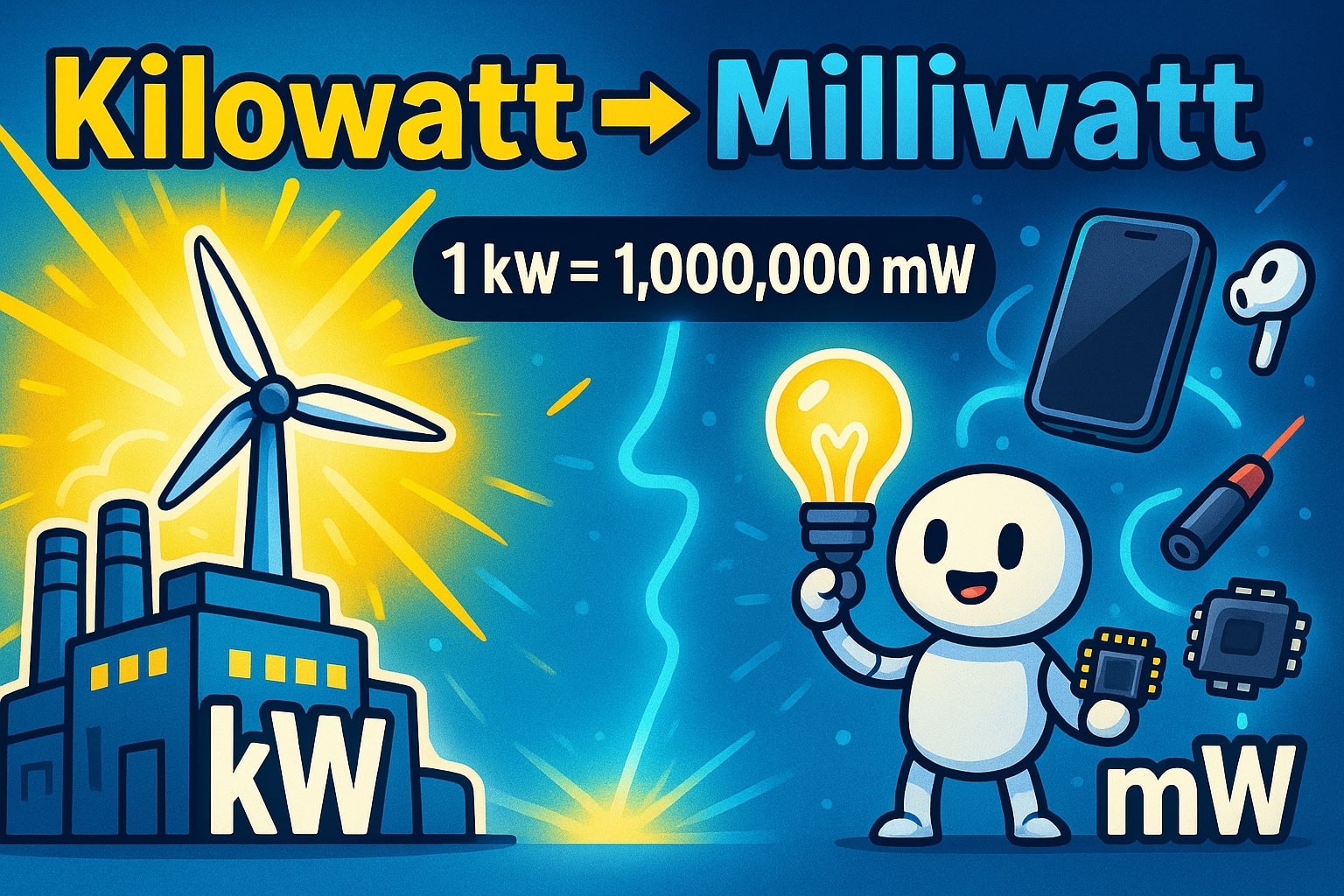kilowatt to milliwatt (kW to mW) - How to convert kW to mW
Converting kilowatt to milliwatt bridges the gap between large-scale power production and ultra-small energy use in electronics. With the right formula, the process is simple and precise, whether you’re working in industry or micro-technology.

What is a Kilowatt?
The kilowatt (kW) is a common unit of power equal to 1000 W. It measures how much energy is used or generated per second. Kilowatts are widely applied in household appliances, power plants, and electric vehicles. For instance, a home air conditioner may consume around 2–5 kW, while an average wind turbine produces several thousand kilowatts.
What is a Milliwatt?
The milliwatt (mW) is a very small unit of power equal to 0.001 W. It’s often used in electronics, telecommunications, and laser technology. Your phone’s microphone, for example, consumes only a few milliwatts, while low-power laser pointers are often rated at 5 mW. This unit plays a critical role in miniaturized devices where efficiency and low power consumption are vital.
Formula: Convert kW to mW
The conversion is direct because both units belong to the same SI system:
1 kW = 1 000 000 mW
Example:
If you have 3.5 kW, then:
3.5 × 1 000 000 = 3 500 000 mW
This massive difference shows how kilowatts represent large-scale energy while milliwatts capture tiny, precise applications.
For quick and error-free results, use our Conversion Tools, which handle kilowatts, milliwatts, and many other units instantly.
Did you know?
-
A typical smartphone uses about 2–6 W when charging, but its components like microphones and sensors operate in the milliwatt range.
-
The International Space Station generates around 120 000 W (120 kW) of electricity from solar panels—equivalent to 120 000 000 000 mW.
-
In films like Iron Man, references to micro-reactors highlight how both large (kW) and tiny (mW) power scales are crucial for futuristic technology.
-
Laser surgery equipment is often rated in milliwatts for safety and precision, ensuring tissue isn’t damaged beyond the targeted area.
From Power Plants to Pocket Devices
In the 20th century, electricity grids were designed around kilowatts and megawatts—huge amounts of power meant for factories, cities, and railways. But with the rise of microelectronics in the 1970s and 1980s, engineers began paying closer attention to power in the milliwatt range.
One striking example is the evolution of portable music players. The original Sony Walkman, launched in 1979, consumed only a few hundred milliwatts, yet it revolutionized personal entertainment. Fast forward to today, and smartphones, earbuds, and wearables operate in a delicate balance of milliwatt consumption while connecting to massive kilowatt-powered data centers across the globe.
This journey—from kilowatts driving industrial progress to milliwatts enabling miniaturized technology—illustrates how energy units shape human innovation. Both scales matter: kilowatts keep cities alive, while milliwatts keep our pocket devices efficient and connected.
Practical Tools Beyond Kilowatt to Milliwatt
Working with power conversions often requires switching across multiple scales. Besides kilowatt to milliwatt, our Power Converter covers watts, megawatts, and more, ensuring flexibility for professionals and students. Combined with the all-in-one Conversion Tools, these resources save time and ensure accuracy in every calculation.
From Energy Scales to Real-Life Impact
The conversion from kilowatt to milliwatt (kW to mW) is straightforward: multiply by 1 000 000. But beyond the numbers, this relationship represents the span of modern life—from powering entire neighborhoods to running the tiniest chip in your device. With Jetcalculator, you can master both scales and apply them where it matters most: turning electricity into progress at every level.


